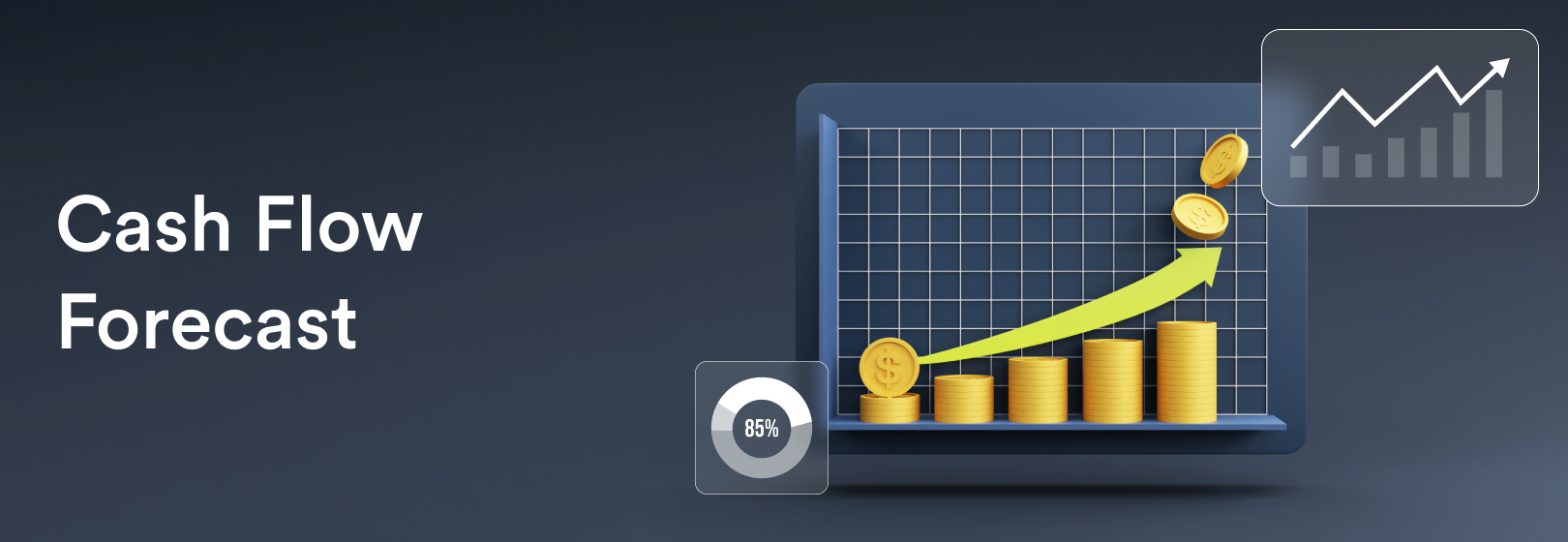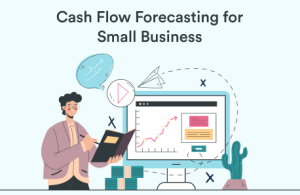Business operations depend entirely upon cash flow. Every business at every stage demands absolute control over its cash management for survival. The creation of cash flow forecasts provides businesses with the necessary framework. All business owners who want to detect financial uncertainties before they appear should consider a cash flow forecast as their essential business asset.
A cash flow forecast predicts future cash inflows and outflows for a business period. Why is it such a big deal? What strategies exist to create a forecast system for your business operations? This guide provides all details necessary to understand the answers.
What Is a Cash Flow Forecast?
Your business needs a cash flow forecast which predicts incoming and outgoing cash movements during specified time frames. Companies prepare cash flow predictions on different timelines, including weekly, monthly and quarterly basis based on their requirements regarding forecasting detail.
Your main objective with a cash flow forecast is to verify that business expenses remain within the boundary of available funds during every time period. The forecast delivers authentic financial information, letting you develop proper plans for the future. The financial prediction function serves as a directional tool which represents forthcoming monetary movement.
A forecasting system for cash flow enables businesses to find moments of deficit or surplus so they can plan ahead by reducing discretionary costs or delay buying and set up backup financing channels.
Read More:- Benefits of Cash Flow Forecasting
Why Is Cash Flow Forecasting So Important?
Every business decision requires consideration of its effects on your cash flow because it determines your financial resources from hiring new team members to equipment acquisition to new product development. A business that lacks knowledge of forthcoming cash availability functions without visibility. Here’s why forecasting matters:
- Prevents Cash Shortages: A forecast shows you when your cash might run low, giving you time to adjust operations, seek funding, or renegotiate payment terms.
- Supports Smarter Decisions: From expansion plans to budgeting and investment opportunities, a solid forecast allows you to make informed choices backed by numbers.
- Builds Investor Confidence: Investors and lenders love forecasts. A well-prepared one tells them you’ve got a grip on your finances and reduces perceived risk.
- Helps You Set Realistic Goals: Growth goals tied to your financial reality are more achievable. Forecasts help you align your business strategy with actual performance.
- Improves Crisis Management: Economic downturns, supply chain issues, or unexpected expenses—whatever the challenge, a cash flow forecast prepares you for uncertainty.
What Does a Cash Flow Forecast Include?
A basic cash flow forecast includes three main components:
- Cash inflows: These are the funds you expect to receive—customer payments, loans, investments, tax refunds, or any income.
- Cash outflows: These are your expected expenses—supplier payments, salaries, rent, utilities, loan repayments, taxes, and more.
- Net cash flow: The difference between inflows and outflows for a given period. A positive figure means more cash is coming in than going out; a negative figure means you may run into a cash shortage.
The forecast can be as simple or as detailed as you like, depending on your business needs and the level of accuracy you’re aiming for.
How to Create a Cash Flow Forecast – Step-by-Step Guide
Creating a cash flow forecast may initially sound intimidating, but it becomes much more manageable once you break it down. Here’s how to go about it:
Step 1: Decide the Forecast Period
Set the period for your forecasting period at the beginning of the process. Short-term operations demand a 4- to 12-week forecast due to tight cash flows especially among small businesses. The forecast period for strategic planning needs to span an entire year for successful implementation. The business approach includes a dual strategy of maintaining short-term forecasts for operational choices and developing long-term plans for strategic considerations.
Step 2: Estimate Your Cash Inflows
Begin your cash receipt projections from current expectations. Your business revenue will stem from customer payments and new contracts as well as subscription revenue streams and loan funds and investment capital.
Make realistic predictions about invoice payments because expecting all invoices to be timely paid is not realistic. Analyse how your customers have paid in the past. Build your cash receipt timeline by incorporating your customers’ actual payment duration since they normally need 45 days instead of the expected 30 days.
Step 3: Estimate Your Cash Outflows
Next, track your expenses. The costs encompass fixed aspects such as rent, utilities and salaries, while variable costs consist of expenses like inventory and marketing campaigns and travel expenses.
Remember to pay quarterly taxes and repay loans and subscriptions that only happen annually. The absence of these payments has a negative impact which distorts your financial projections within shorter periods.
Regular payments to vendors based on weekly, biweekly or monthly schedules should correspond to respectively matched periods in the forecasted timeline.
Step 4: Calculate Net Cash Flow
Subtract all outflows from all inflows for individual forecasted periods. The result of this calculation will show the amount of cash remaining.
A positive net cash flow indication in your forecast demonstrates that your business exceeds its period expenditures with resulting generated cash. That’s great news. Any detected negative cash flow amounts indicate a need to either improve revenue streams or postpone spending expenses.
Step 5: Add Your Opening Cash Balance
Take the cash you have in the bank at the start of your forecast and add the net cash flow from Step 4. This gives you the closing cash balance for that period.
Repeat this for each week or month in your forecast. The closing balance for one period becomes the opening balance for the next.
Step 6: Review and Adjust Regularly
Cash flow forecasting isn’t a one-and-done process. It needs to be updated regularly, especially if your business is growing or facing economic uncertainty.
Compare your actual performance with your forecast and adjust where necessary. This will improve your forecasting accuracy over time and make it a truly useful tool.
When Should You Start Creating a Cash Flow Forecast?
The answer is simple: as early as possible. If you’re starting a new business, create a forecast before launching. This gives you a clearer understanding of how much funding you’ll need and when you’ll need it.
For existing businesses, the best time to start is now. Even if your finances have been running smoothly, a cash flow forecast helps prepare for the unexpected. The earlier you spot potential problems, the more options you have to address them.
What If the Forecast Shows a Cash Shortfall?
First, don’t panic. Business failure is not a result of a funding shortage but requires proper action to resolve it.
Review assets for expense postponement or verify if receivables management can be accelerated. Evaluate potential short-term funding sources. The assessment of subscriptions needs to be conducted to determine wasteful costs that can be eliminated.
To strengthen cash flow you should think about asking suppliers for longer payment periods and also present discounts to those who pay their invoices ahead of schedule.
Read More: Discounted Cash Flow (DCF) Model
How Often Should You Update Your Cash Flow Forecast?
Most commercial companies should perform cash flow updates every month. The frequency of business cash flow changes should determine whether you update forecasts monthly or weekly. The forecast needs detailed monitoring during high-growth periods and when a crisis or economic turbulence occurs.
Include cash flow forecasting as a routine financial procedure that matches your other financial tasks such as P&L reviews or account matching.
Conclusion
Your financial toolkit contains an essential tool which is actually a cash flow forecast although it may not appear as significant as other tasks on your list. Your business success depends on being prepared with resilience and showing proactive readiness rather than seeking flawless future predictions.
Forecasting effectively allows businesses to navigate changes in their conditions by making informed decisions and experience peaceful nights since they understand upcoming factors. All entrepreneurs who operate independently and those who supervise extensive teams should create and sustain cash flow forecasts. Your current self along with your business will express gratitude to you in the future.



